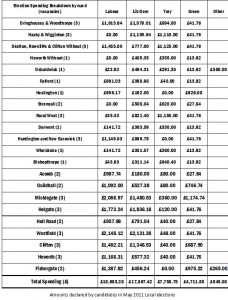
Good progress is being made with the construction of the 6 new bungalows opposite the shops on Cornlands Road. The properties are expected to be occupied towards the end of the year.
Green Belt snaps

Click on map to enlarge
Last nights Council decision to go ahead with building the equivalent of another Huntington on green belt land adjacent to York will have repercussion for future generations.
The last Council found sites for 12,000 homes – all on land which already had planning permission or which had previously been developed (brownfield sites).
Reducing the number of units to be built on brownfield sites (York Central) was a significant step.
3800 new homes on Green Belt sites is the main issue and conflicts with resident’s opinion which was tested last year. 60% said that they wanted to preserve York’s green belt boundaries.
The 575 pa homes included in the original plan is more than the average number of dwellings built over the last 5 years.
Labour claimed that the draft LDF could be viewed as technically unsound. But central government is currently reducing proscription on Loc al Planning Authorities. The rules are changing. Localism means local people deciding (and they made their views clear last year).
A report by consultants Arup which was used to justify the extra homes was based on extrapolations of national data which had never taken into account the length (or depth) of the economic recession. The migrant workers have returned home over the last couple of years (mainly to Eastern Europe).
Western Europe is unlikely to get back to boom conditions for a decade at least.
We have a waiting list for homes of around 3,500 in York. The issue for those people is not the gross numbers of properties available – there are a lot of empty and under-used properties in the City – but c ost. Developing out the existing 4000 planning permission would, everything else being equal, satisfy outstanding demand in the City.
Exceed that and inward migration would take place (depending on job availability)
We have on average created about 300 ADDITIONAL jobs each year in the City for the past decade (the earlier part of which was a boom period). This is different from the 1000 NEW jobs that is the target in the LDF, most of which simply replace jobs being lost as the economic profile of the City changes.
575 new homes each year is more than adequate to address the needs of the jobs market. Anything else will stagnate large parts of the City as developers will not build unless there are customers. There won’t be customers without more jobs. If there were more jobs, then inward migration would be the only way of filling the jobs during the next 20 years.
Labour also tinkered with the wording on off site/cash contributions in lieu of on site provision part of the LDF. This was agreed – by all parties – as a way of getting the market moving again. For example, builders do take properties in “part exchange” for new ones. These part exchanges might have been used to supplement the rental pool.
So now huge chunks of undesignated (white) land will be shown on the York development map around Huntington and Osbaldwick. For land owners and developers this is the equivalent of winning a triple roll over lottery jackpot. They will fall over themselves to justify early development to planning inspectors on their particular piece of land.
With the guidance on growth incentives also being changed by central government, few would bet against the next decade seeing a dramatic change in the size of the City and its character.
Rates, rents and road safety – Some good news for York
Hot on the heels of yesterdays announcement that the speed limits in the area are to be enforced using mobile speed cameras (something that we have been seeking for years), Deputy Prime Minister Nick Clegg has said that local Councils will, in future, be able to keep more of the Business Rates that they collect locally.
In York, the Council collects around £85 million from business ratepayers each year. Currently this is all handed onto the Treasury. About £39 million is then returned to the City. The difference is redistributed to other parts of the country.
It is a similar situation to what has been happening with the income from Council House rents. Over £5 million a year is currently siphoned off from York tenants to subsidise other housing accounts.
Now both these anomalies are being addressed by the Coalition government. It means that any growth in the income from businesses could be invested in improving infrastructure and public service capacity in the City.
Acomb Bowling Club threat
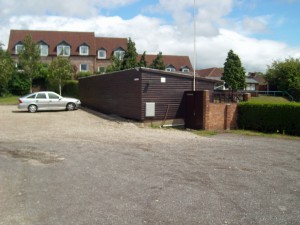
The announcement that the Labour Council intend to sell the Acomb Bowling Club and adjacent land on the open market next year is a big blow to the Westfield area.
The last Council had given an assurance to the Club that they would be able to use the greens for the foreseeable future. Now it seems that the future of the facility is once again at risk.
Originally the Council had intended to build a replacement for the Acomb Office on the site. However revised plans indicated that the necessary accommodation – mainly interview rooms – could be built on the present library car park, with the existing club car park being shared with Council customers. Some staff would move from the Acomb Office into the new Council HQ being constructed in Toft Green while customer facing officers would remain in Acomb.
Residents would benefit from having a “one stop shop” access to all Council services, and the cost of the new building work would have been reduced to around £0.5M. This investment would have been recovered by savings when the existing £50,000 a year lease on the Carr Lane office expired next year.
It was expected that the area to the immediate rear of he library would have accommodated a couple of new homes while the problem land to the immediate rear of Chancery Court would have been landscaped.
Now this plan is up in the air as the Labour Council pursue their policy of asset stripping the Council..
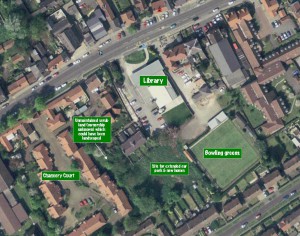
Free commuting?
There has been a debate in the media sparked by claims from the new council Leader that taxpayers are subsidising Council workers commuter trips to the tune of £150,000 pa.
If that figure is correct, then he is right to challenge it.
However it is common practice these days for trades-people employed in both the private and public sector to “garage at home”.
Many will be “on call” to deal with emergencies. The York Council has a generally good reputation for dealing with urgent repairs both at Council owned homes and more generally in providing 24/7 support for the City’s infrastructure.
Other trades-people take their commercial vehicles home with them so that they can start work at the location of their first job. Jobs are allocated on the telephone or using electronic means. This improves efficiency and reduces at least some of the potential congestion on City centre roads.
The negative side of “garaging at home” is that, in many of our estates, parking space is at a premium and large vans and lorries can take up a disproportionate amount of road space.
Overall it would probably be a backward step to require these workers to park up their vehicles at James Street overnight.
It has been suggested that some administrative staff and managers are using Council vehicles simply to commute to and from work. That would be more difficult to justify.
Separately from the debate about the use of Council owned vehicles, is the issue of the “mileage rate” being paid to Council staffs who use their own vehicles while on official duties. At present the rates paid exceed the level recommended by the Inland Revenue. Any “profit” claimed by employees is subject to tax.
It was these payments which the Labour Group said in February they would reduce saving taxpayers at least £72,000 in the current year.
Council election expenditure by ward by party
Labour’s budget plans
Labour have now published the detail of their plans to change the Councils budget. They are different from those that they published before the Council elections.
They have jettisoned their promise to increase bus subsidies, do more for teenagers and expand the use of the Yearsley swimming pool.
They’ve introduced a new £38,000 proposal which would see – the equivalent of – 2 new full time Trades Union positions established.
To help pay for these changes they are halving their commitment to provide breaks for disabled children from £100k to £50K.
Controversial plans to reduce the size of recycling containers are included, as is a plan to stop increases in ResPark charges although these were actually implemented 3 months ago (Charges for small cars were frozen at £44 pa). It almost beggars belief that the Council might be considering refunds of £2 to the owners of standard vehicles or that they will reduce the charge to the owners of large high emission cars and vans who pay the top rate of £112pa.
Ironically the old Council managed their 2010/2011 budget so carefully that a £200,000 surplus was available at the end of the year to underpin public service standards in the current year.
The budget for the pretentious “fairness commission” has ballooned to over £5000. One of its first tasks might be to consider why these budget proposals, and the hugely important changes to the LDF plan, were only published on the Councils web site 4 days before this week’s Council meeting. (The previous Council published material for residents to read 8 days before a meeting).

Rubbish and recycling collection route confirmed Saturday 2nd July
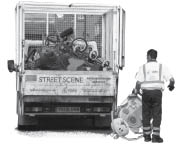
Rubbish and recycling wagons near to you…
On Saturday 2nd July there will be collections of bulky items throughout the ward. The wagons will be following the route at the approximate times shown on the back page.
Please note the vans are unable to collect asbestos/refrigeration equipment/liquids (including paint, waste, oils etc.)
Starting at:
Ridgeway (8am, 9am & 10am) then calling at ;
Askham Lane, Front Street, Gladstone Street, Milner Street, Green Lane (to roundabout) (8.15am, 9.15am & 10.15am)
Kingsway West, Danesfort Avenue, Gale Lane, Cornlands Road, St Stephens Road, Gale Lane, (8.30am, 9.30am & 10.30am)
Foxwood Lane, Huntsman’s Walk, Tedder Road, Askham Lane (Approximately 8.40am, 9.40am & 10.40am),
Grange Lane and Chapelfields Road.
Put your items anywhere on the route where they can easily be seen but please do not put anything out after the last times shown.
Green Belt threat confirmed
Details of Labours plan to build on the Green Belt have been published on the Councils web site only 4 days before their proposal is due to be rubber stamped by the Council.
See http://www.york.gov.uk/council/meetings/
Under the plan fewer homes would be built on the “Brownfield” York central site which is located behind the railway station.
Instead around 4000 homes would be constructed on greenbelt land in the Huntington and Osbaldwick areas.
In Westfield the Our Ladies school site is down to accommodate 69 homes while the Lowfields site could see 96 units constructed.
The allocation of development is summarised in the following illustration.
Dozens of amendments to the Local Development Framework have been tabled for Thursdays Council meeting with no attempt made to have any kind of public consultation on the changes.
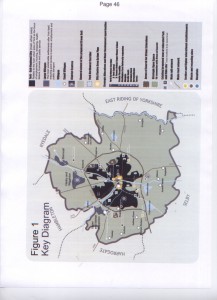
Car parking
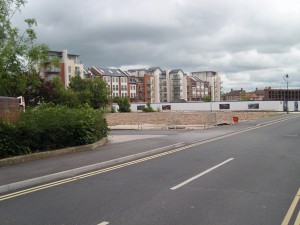
With the Council apparently set to sell the Kent Street coach park for a knock down figure and claims in the media that they have agreed to off load the Union Tce car and coach park for a miserly £2 million, one wonders whether they will also go ahead with the sale the 100 space Haymarket car park?
Traders will be very concerned if 280 car parking spaces and around 80 coach spaces were all to go at the same time.
Critically though it would jeopardise the £600,000 that the Council receives in car parking revenue from the car parks involved, leaving a big gap in next years budget.
Some motorists might use other Council car parks but the big gainers could be the privately operated car parks at Tanner Row and Garden Place.
One short term option, which would bring in more income for the Council, would be to extend the Haymarket car park onto the redundant land next to it – which used to house the ambulance station (see photo).
With room for about 70 cars there it could generate around £100,000 a year in badly needed income.

